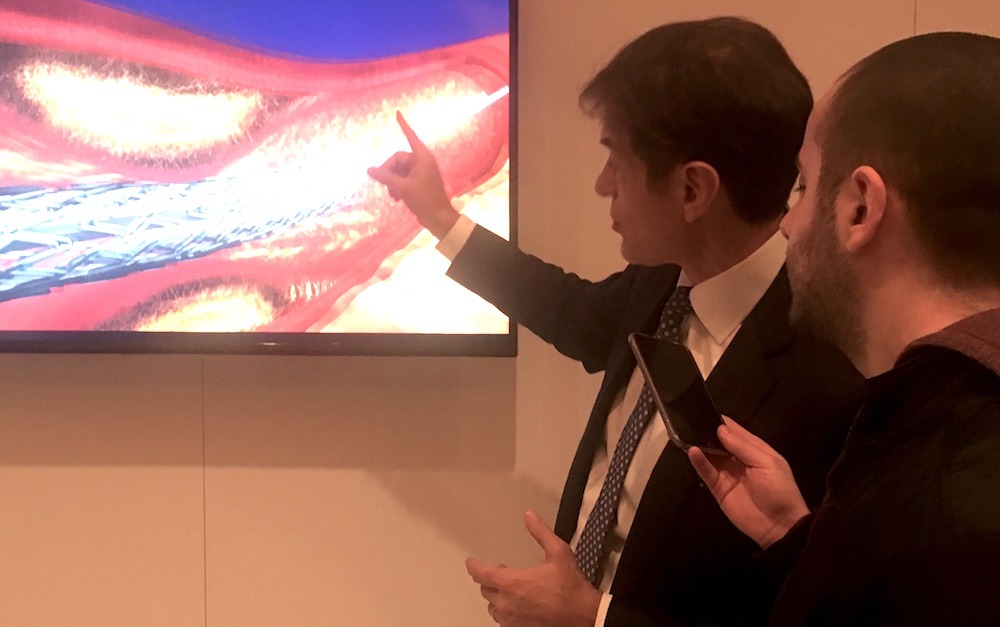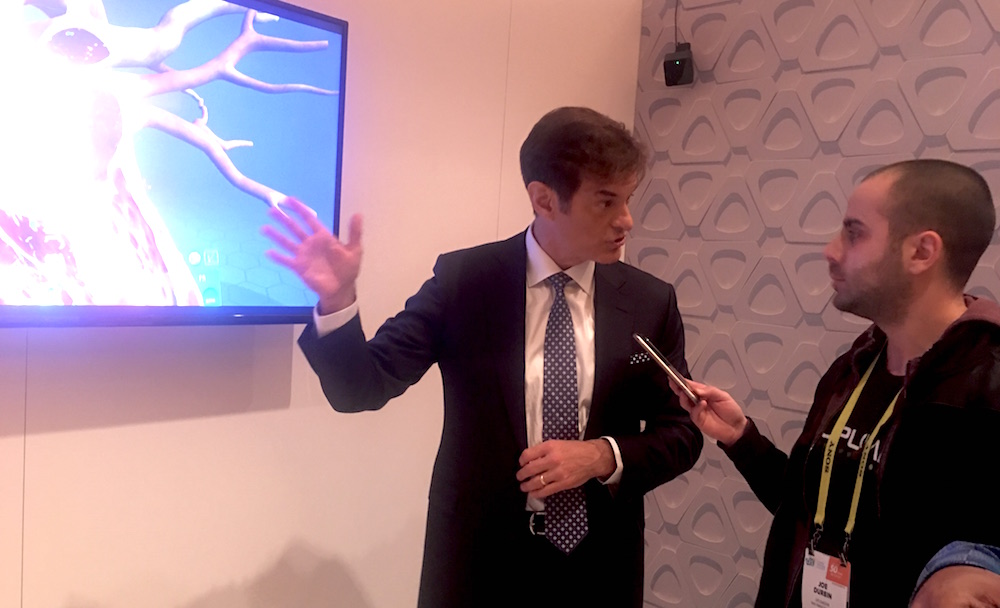Dr. Mehmet Cengiz Öz, better known by the simplified monicker, “Dr. Oz,” has quite the extensive resume. He is a cardiothoracic surgeon and professor at Columbia University as well as an author, speaker and television promoter. Now, you can add “virtual reality evangelist” to that list as well.
In 2010, Öz co-founded a company called Sharecare — a digital health company that aims to help users create profile based, data driven hubs to manage all aspects of their health and wellness online. In September of last year, Sharecare acquired a VR company by the name of BioLucid, now known as Sharecare Reality Lab, whose tech has now led to Sharecare’s creation of You VR.
You VR is, at its core, a visualization tool for physicians and patients alike. The app lets you choose a part of the body and then explore it immersively and in three dimensions. Users begin in You VR with a normal model of a human being. By clicking and dragging with the Vive controller on an in-game tablet you can then stratify that woman into her core physical components (nervous system, skeleton, cardiovascular, etc). Individual organs and body parts can then be selected to be enlarged, rotated and studied up-close.
You VR’s most interesting feature is a button that, when pressed, shrinks you down and transports you inside the organ you are examining. You can stand in front of the chambers of the heart as they open and close or examine a blood vessel as if its the size of a highway.
There are hundreds of “scenarios” that You VR can visualize as well. Doctors can display exactly what a clogged artery looks like and can even demonstrate how a procedure such as a stent would look and work in real time. Öz believes that the ability to see our bodies in an entirely new way is what makes VR so important for medicine.
“The human has has been forbidden from human eyes for thousands of year,” Öz said during an interview at CES in Las Vegas. “A few special individuals called doctors are allowed to peek inside but for most people they never truly get to know what’s happening inside of them. With VR that can change.”

Öz wants to incorporate You VR into the ShareCare ecosystem and give users the opportunity to understand exactly what is happening inside of their bodies. There will eventually be a feature built into the site itself that allows patients to instantly jump into VR visualizations of their own bodies. Right now, You VR cannot depict the unique anatomy of your individual heart or liver, but Öz says that the team is constantly looking to make the experience more personal.
“The real medical crisis happening right now isn’t about what happens in an operating room, it’s about access to data,” Öz said. “What we want to do is do for medical science what Google Maps has done for navigation. We’re going to harness millions of data points for patients and convert that into simple, understandable information.”
For Öz, VR is not just a helpful tool for patients. In his estimation, physicians in general are eager to embrace new technologies and they should pay particular attention to VR.
“What I love about [You VR] is that it actually makes my life easier,” Öz explained. “Sometimes when a hospital administrator knocks on my door I groan knowing how little benefit some new device will actually provide. But this is actively improving our ability to see and understand our patient’s anatomy.”
One example Öz points to is with X-Rays. Despite years of breakthroughs in medical imaging technologies, black and white translucent X-Rays are still in heavy use. Medical professionals need to be specially trained to read these unique images but Öz believes VR can make the process infinitely more efficient.
“I hurt my knee playing touch football recently and my colleague was able to show me an actual 3D model of my injury rather than an X Ray and I could instantly see the problem,” Öz said. “Why should we spend so much time interpreting something like an X-Ray? Why can’t we just look at something and analyze it naturally.”
This change in perspective, if it can work as smoothly as Öz describes, would be key in helping physicians prepare for and accept procedures that were previously untenable. For example, Öz believes that conjoined twins or congenital heart defects are two conditions that VR could instantly help address.
“The first thing any surgeon does with a difficult procedure is get more light onto the area,” Öz explains. “Seeing is everything in surgery both before and during the operation. VR is very powerful tool for doctors in that respect.”
Öz has begun sharing You VR with physicians for feedback and his teams at Sharecare Reality Lab are actively iterating on the product to prepare it for its eventual release with more scenarios, models, and interactions. Currently, Sharecare is providing You VR strictly to pharmaceutical or medical companies, healthcare systems, consumer-facing healthcare companies, and educational institutions.































